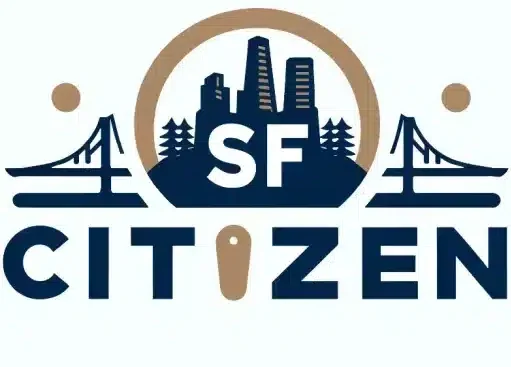San Francisco, a city known for its iconic Golden Gate Bridge and diverse neighborhoods, faces unique challenges and opportunities in urban planning due to its distinctive topography and history. With a population of over 873,000 people packed into just 46.9 square miles, the city must balance growth, sustainability, and quality of life.
In This Article
Key Points
- San Francisco’s unique topography, with hills and a bay, presents both challenges and opportunities for urban planning.
- Historical events, such as the Gold Rush and the 1906 earthquake, have significantly influenced the city’s development and infrastructure.
- Current urban planning initiatives in San Francisco focus on addressing housing affordability, transportation efficiency, and environmental sustainability.
Historical Context and Urban Development
San Francisco’s urban layout has been shaped by historical events, such as the Gold Rush in the 1850s, which led to rapid population growth and haphazard development. The devastating 1906 earthquake and fire marked a turning point, as the city rebuilt with a greater emphasis on modern urban planning principles.
Throughout the 20th century, landmark legislation and policies, such as the 1972 Urban Design Plan, have guided San Francisco’s growth and development. These plans aimed to preserve the city’s unique character while addressing the needs of a growing population.
Topographical Influences on Urban Planning
San Francisco’s hilly terrain and proximity to the bay have significantly influenced its urban planning. The city has adapted its infrastructure and building designs to accommodate the steep slopes, with iconic cable cars and step-streets becoming part of its charm.
The San Francisco Bay has also played a crucial role in the city’s development, with waterfront areas being transformed from industrial zones to mixed-use neighborhoods and public spaces. Urban planners must also consider earthquake preparedness, implementing strict building codes and resilience strategies to protect the city and its residents.
Housing and Urban Density
Like many major cities, San Francisco faces a housing crisis, with high demand, limited supply, and soaring costs. Urban planners have implemented various measures to address this issue, such as:
- Updating zoning laws to allow for higher-density development and a mix of housing types
- Encouraging the construction of micro-apartments and co-living spaces to maximize available land
- Promoting affordable housing initiatives and inclusionary zoning policies
Transportation and Mobility
Efficient transportation is crucial for San Francisco’s urban planning, given its high population density and limited land area. The city boasts an extensive public transportation network, including the Bay Area Rapid Transit (BART) system and the San Francisco Municipal Railway (MUNI).
Urban planners also prioritize the development of cycling and pedestrian infrastructure, creating a more walkable and bike-friendly city. Bridges and tunnels, such as the Golden Gate Bridge and the Transbay Tube, play a vital role in connecting San Francisco to the broader Bay Area.
Green Spaces and Public Amenities
Integrating parks and green spaces into the urban fabric is a key aspect of San Francisco’s urban planning. The city strives to balance development with public access to open spaces and waterfronts, ensuring that residents have opportunities to connect with nature.
Urban planners also prioritize the creation of community centers and public amenities, such as libraries and recreation facilities, to enhance the quality of life for San Franciscans.
Sustainability and Environmental Considerations
As a coastal city, San Francisco is at the forefront of sustainability and environmental planning. The city has implemented various initiatives, such as:
- Promoting renewable energy and sustainable building practices
- Encouraging waste reduction and water conservation through innovative urban planning strategies
- Developing climate change adaptation plans to protect the city from rising sea levels and other environmental threats
Technological Innovations and Smart City Initiatives
San Francisco is leveraging technological innovations to create a more efficient and livable city. Urban planners are integrating smart city technologies into the city’s infrastructure, such as:
- Implementing sensors and data analytics to optimize traffic flow and energy consumption
- Collaborating with the private sector on innovative urban development projects
- Utilizing digital platforms to engage citizens and gather input on urban planning decisions
Economic Factors and Urban Planning
San Francisco’s thriving tech industry has significantly influenced its urban development and housing market. Urban planners must balance the needs of the tech sector with the goal of creating an inclusive and affordable city for all residents.
Tourism also plays a significant role in San Francisco’s economy and urban planning. The city must manage the impact of tourism on public spaces and infrastructure while ensuring that the needs of local communities are met.
FAQ
How has San Francisco’s unique topography influenced its urban planning?
San Francisco’s hilly terrain and proximity to the bay have posed challenges and opportunities for urban planners. The city has adapted its infrastructure and building designs to accommodate the steep slopes, with iconic cable cars and step-streets becoming part of its charm. The bay has also influenced waterfront development and conservation efforts.
What are some of the historical events that have shaped San Francisco’s urban development?
The Gold Rush in the 1850s led to rapid population growth and haphazard development in San Francisco. The 1906 earthquake and fire marked a turning point, as the city rebuilt with a greater emphasis on modern urban planning principles. Landmark legislation and policies, such as the 1972 Urban Design Plan, have also guided the city’s growth and development.
How is San Francisco addressing its housing crisis through urban planning?
San Francisco is tackling its housing crisis by updating zoning laws to allow for higher-density development and a mix of housing types, encouraging the construction of micro-apartments and co-living spaces, and promoting affordable housing initiatives and inclusionary zoning policies.
What role does public transportation play in San Francisco’s urban planning?
Efficient public transportation is crucial for San Francisco’s urban planning, given its high population density and limited land area. The city has an extensive public transportation network, including the BART system and MUNI. Urban planners also prioritize the development of cycling and pedestrian infrastructure to create a more walkable and bike-friendly city.
How is San Francisco incorporating sustainability into its urban planning?
San Francisco is at the forefront of sustainability and environmental planning. The city promotes renewable energy and sustainable building practices, encourages waste reduction and water conservation, and develops climate change adaptation plans to protect the city from environmental threats.

